Features
Revolutionary Acts: Death to PowerPoint
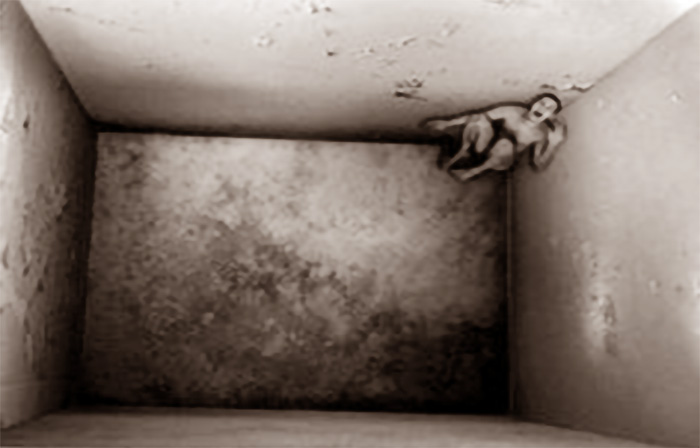
by Sivamohan Sumathy
 Long before MIT and Jeff Bezos (the latter reluctantly referred to here) had supposedly banned PowerPoint in the classroom or at meetings, I had banned its use in my classes. I wished to live and create a moment of life, and not entice death, death by PowerPoint; a macabre slide-show of misadventure. Its hero, protagonist, or villain, deadly boredom. It is about aliens, made up of quantum particles of ominous signs, bullets and slides, circles and squares, colours that light up on command. It has taken over your mind, got under your skin, and holds you not in a choke hold (too much excitement for PowerPoint), but brings about a paralysis of the body; sleep overtakes one, one slips into another world, while the presentation washes over you. Then you are in the torture chamber, trying to keep your eyes open, in an attempt to defeat death. There is an after-life, too. A day later, one cannot remember a single slide, a single bullet point, and a single idea. And there are no notes for you to look over, jog your memory, for the harbinger of death has offered to send you their PPP which has not happened yet, and when it does, the file is lying somewhere in your overcrowded email account. It is the first file to be deleted, for you cannot remember why it is there and what it is about.
Long before MIT and Jeff Bezos (the latter reluctantly referred to here) had supposedly banned PowerPoint in the classroom or at meetings, I had banned its use in my classes. I wished to live and create a moment of life, and not entice death, death by PowerPoint; a macabre slide-show of misadventure. Its hero, protagonist, or villain, deadly boredom. It is about aliens, made up of quantum particles of ominous signs, bullets and slides, circles and squares, colours that light up on command. It has taken over your mind, got under your skin, and holds you not in a choke hold (too much excitement for PowerPoint), but brings about a paralysis of the body; sleep overtakes one, one slips into another world, while the presentation washes over you. Then you are in the torture chamber, trying to keep your eyes open, in an attempt to defeat death. There is an after-life, too. A day later, one cannot remember a single slide, a single bullet point, and a single idea. And there are no notes for you to look over, jog your memory, for the harbinger of death has offered to send you their PPP which has not happened yet, and when it does, the file is lying somewhere in your overcrowded email account. It is the first file to be deleted, for you cannot remember why it is there and what it is about.
An Ally: Les Back
In this epic drama against PPP, I have begun to look for the performative features of what we generally call the academic, in the singular, as an icon, a diva, and a visionary of the collective. And I discovered Les Back’s Academic Diary (London: Goldsmith University Press, 2016). Written in a Freirean mode, on the classroom and pedagogy, and on the multiple meanings that the term academic can conjure up, Academic Diary is a measured, undogmatic, pragmatic, nevertheless deeply political treatise on the life of the scholar and the academic, the classroom and pedagogical and academic practice. His own inspirations are those of the cultural materialist tradition, Hoggart, Bourdieu, Showalter, the much-loved Stuart Hall, Berger and others: socially grounded visionaries, and for the most part, Gramscian, who take class as a pronounced force in the analysis of pedagogy.
Back’s record for 5th November in the Autumn semester is titled: Death by PowerPoint. But if my approach to pedagogy in the classroom is that of a crusader, a performative of the Gramscian theoretic of the war of position (hiding in the trenches, biding one’s time, and striking at the enemy, PPP, in this instance, in a series of calculated negotiations), Back’s words are a reflection on it. Back’s is a more conciliatory and assuredly pedagogic one. His exposition is both theoretical and experiential. On the ill-uses of PPP, he is unequivocal: it’s death itself, isn’t it? He writes:
“The increasingly digitized forms of academic performance have a downside. The worst example I’ve witnessed was a conference in America, where a Sociologist merely read the content of his talk from the large shimmering screen.” Now, is this all too familiar to one? Back continues: “The presenter addressed the screen and had his back turned toward the audience.” It was as if he was worshipping it [the new gadget] as if it were an altar of new ideas.” Later Back says, “The ‘bullet point effect’ can produce a situation where presentations seem like a long series of lists, without much exposition. Complex arguments cannot be crafted through a series of quick-fire points at the click of a mouse.”
I am fair, and want to present his views on the dreaded PPP as accurately as possible. “PowerPoint offers more options to blend words, sound and vision and it is for this, it can be a major resource.” I have to disagree.
Death by PPP: the NASA episode
Death by PowerPoint, apparently, literally happened, in our objective world of truth and falsity. And it has to do with NASA. Chuckle, chuckle. In 2016, a PPP made by NASA engineers outlined the dangers attached to the re-entry of the space shuttle Columbia, which was in orbit for 16 days, and offered a few options for actions NASA could take to save the space shuttle and its crew. NASA’s managers did not understand the extent to which the dangers facing the space shuttle on re-entry were imminent; and all because of the way PPP was laid out. A “scientific” report on how and why tragedy struck the space shuttle and its crew of seven astronauts finds that the fault on the space shuttle reentering Earth’s stratosphere was identified by NASA’s technical team, but that it was not conveyed properly to NASA’s Managers, because of the use of PPP. The report’s concluding pronouncement is that:
“The Board views the endemic use of PowerPoint briefing slides instead of technical papers as an illustration of the problematic methods of technical communication at NASA.” It couldn’t get more ridiculous than that. It is like a joke spun by a stand-up comedian. But then I saw a picture of the smiling faces of the crew taken, I assume, just before the launch of the shuttle. It is no joke.
If we are to live alongside PPP and its deadly flat earth bullet points, we must also reckon with our own frailty and fragility and as Dwivedi and Mohan, in their essay on the pandemic, “The Community of the Forsaken: A response to Agamben and Nancy” say, that in the “time of the human,” we have a shared sense of the word, the notion that we are “forsaken,” and “fragile” and that we are “precious.” This is the response that can save us. Relatedly, for me it is about confronting the fear of death, ah, well, by PowerPoint or a version of it, PPP on Zoom, through a shared sense of the word, our frailty and fragility.
PPP, Technology and our Fragility
In the early days of the lockdown as we in the university struggled with the unfamiliar technology of Zoom and even more unfamiliar techniques of teaching online, we were beginning a new year and a new semester. I had to teach a beginning critical theory class online, and I did not know how to do Freire on Zoom, to a class of students I hardly knew. I assign what I call a fun writing exercise on “Freire and the [shared] word,” that has to be accompanied by an image. It was the very first theory paper the students of that cohort wrote. Here is an extract of a student’s assignment, and the accompanying email they sent me, both reproduced here with permission.
“The 23-year-old is adamant that it is not even an option, what good were these assignments if one of us [in the family] got sick, if something were to happen to you … to be this powerless I hate it. She goes to work with her father and elder sister, the emails keep coming … The students commenting and submitting their work … irrationally angry at the world and at everyone but having to appear cheerful so as not to worry anyone. The 23-year-old regrets her decision of ever joining University … she should have just found a job with a good salary … my parents could have stayed at home safe without having to work … The mental strain just keeps adding up … please issue the curfew once more at least then I will know my family would be safe. Or, put down the entire island’s network connection. Hiding the worries, she puts up a carefree, cheerful front, “Who cares about assignments I’ll just submit something I don’t care”
Later concluding her essay on “Freire and the Shared Word,” she writes,
“I did not want to alter this piece much, mostly because I think the original piece was able to better capture what I was feeling during that time. Given the fact that we had to write this with Freire’s view of the shared word I do not want to bring in other theories because in trying to incorporate them I fear I would change the course of what I tried to initially say. I would instead like to place emphasis on the evolution of my understanding of the theories discussed in this course using this piece as a starting point. I would however include an image, which in a certain sense is related to the above, where I portrayed my helplessness. It is my intention to express a very personal emotion through this image, where I am confined by my helplessness and I feel the walls closing in.” (See image)
Public Domain
Later, she sends me a link to a song with the accompanying note on email.
“Thanks Ma’am. To be honest, I’m having trouble finding a suitable image. I was hoping to capture either the idea of a home or loneliness but so far, I could not find something genuine enough. Instead I have attached a song, which as cliché as it sounds, expresses some of my own turmoil. It is called Karuppu Vellai. The music is a bit heavy, and you could say it is an acquired taste. But the meaning is quite interesting. I apologize in advance for the heavy rock music but I feel this brings out the emotions better.”
Both teacher and student struggle to co-exist within and against the civilizational threat even as we try to grapple with a shared sense of fragility, a shared sense that we are forsaken and that we are precious, in a series of negotiations that are not necessarily exploitative or authoritarian, but only just. “Word, Sound, Vision” encode each other, as Les Back says in our strategies against death, even death by PPP.
Karuppu Vellai
: https://youtu.be/4AYAcFcFu84?si=-TWbzoRcNKZEozHd
(Sivamohan Sumathy is attached to the Department of English at the University of Peradeniya)
Kuppi is a politics and pedagogy happening on the margins of the lecture hall that parodies, subverts, and simultaneously reaffirms social hierarchies
Features
Iain Douglas-Hamilton: Science, courage, and the battle for elephants
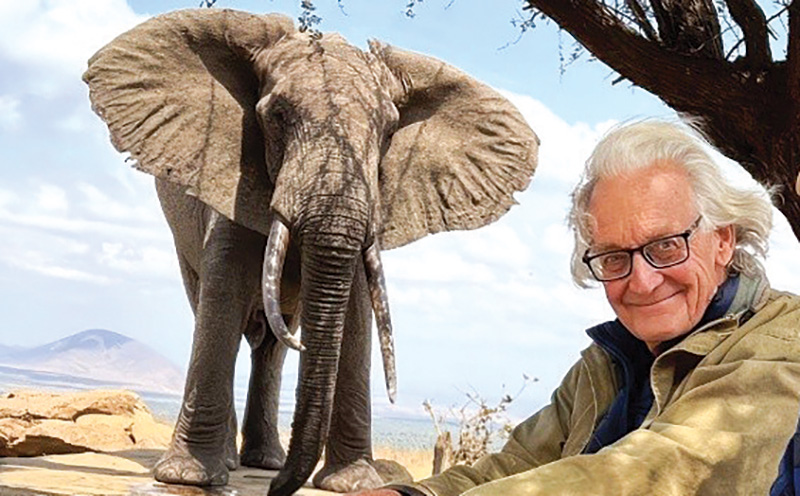
Passing of Iain Douglas-Hamilton, a man who dedicated his life to conservation and whose life’s work leaves a lasting impact on our appreciation for, and understanding of, elephants.
– Prince William
In Africa on 08 December, 2025, when the sun slipped below the horizon, it did not only give an end for that day, but it also marked the end of a man whose knowledge and courage saved Africa’s elephants. This gentleman was none other than Iain Douglas-Hamilton! There is a beautiful African proverb that says, “When an old man dies, a library burns to the ground,” and it resonates well with Iain’s demise.
Iain pioneered behaviour research on elephants, and he was the first to highlight the elephant poaching crisis in Africa. Also, the adventures he went through to save the elephants will inspire generations.
From Oxford to Africa
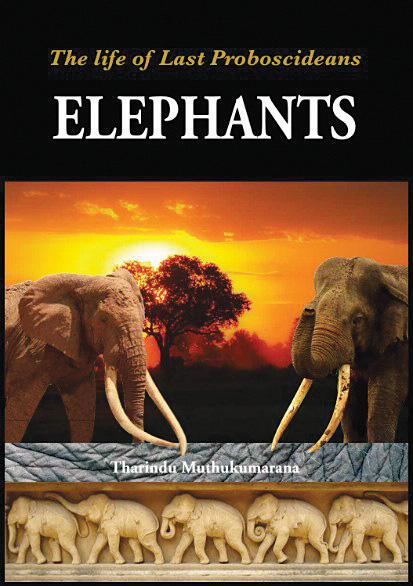
The Life of the Last Proboscideans: Elephants”, authored by Muthukumarana, stands as an awardwinning, comprehensive study that integrates elephant evolution, anthropology, biology, behaviour, and conservation science.
Iain was born on 16 August, 1942, into an aristocratic family, the son of Lord David Douglas-Hamilton and Ann Prunella Stack. His parents were a distinguished couple in Britain: his father, a Scottish nobleman, served as a squadron leader in the Royal Air Force, while his mother was a pioneering figure in physical fitness and a prominent advocate for women’s rights. After finishing his school, Iain was admitted to Oxford University to study zoology. At the age of 23, for his PhD, Iain travelled to Tanzania to study the behaviour of elephants at Lake Manyara National Park. This was a daring and humble beginning that would change how the world understood elephants. He learnt to recognise individual animals based on their tusks and ears. He observed their family bonds, their grief, and their intelligence. These findings made the scientific community identify elephants as sentimental beings. During this period, he married Oria Rocco, and together they had two children, Saba and Mara.
Battle for the elephants
When ivory poaching swept across Africa and devastated elephant populations, Iain did not withdraw in despair. He confronted the crisis head-on, guided by science, rigorous data, and unwavering resolve. Through extensive aerial counts and field studies, he laid bare the scale of the tragedy—revealing that Africa’s elephant numbers had collapsed from an estimated 1.3 million to just about 600,000 in little more than 10 years.
It was largely thanks to his work that the global community saw—perhaps for the first time—the full scope of the crisis. His efforts played a pivotal role in pushing forward the 1989 international ban on ivory trade, a landmark moment for wildlife conservation.
In 1993, Iain founded Save the Elephants (STE), an organisation that would become the heart of elephant conservation efforts in Kenya and across Africa.
At STE, he pioneered the use of GPS-tracking and aerial survey techniques to monitor elephant movements, protect them from poaching, and plan safe corridors for them in increasingly human-dominated landscapes. These methods have since become standard tools in wildlife conservation worldwide.
Beyond technology and science, Iain was a mentor. He inspired — and continues to inspire — generations of conservationists, researchers, and everyday people who care deeply about wildlife. Through his books (such as Among the Elephants and Battle for the Elephants), documentaries, lectures, and personal example, he invited the world to see elephants not as trophies or commodities, but as sentient beings — worthy of awe, study, and protection.
Iain and Sri Lanka
In 2003 Iain came to Sri Lanka for the first time to attend the “Symposium on Human-Elephant Relationships and Conflict” as the keynote speaker. On that day he concluded his address by saying, “When I hear the talk of Problem Animal Control, I always wonder whether our species has the capacity for its own self-regulation or Problem Human Control in a humane and wise manner. HEC stands for Human Elephant Conflict, one of our focuses of this conference. How I wish it could come to stand for Human Elephant Coexistence, based on a recognition that other beings also need their space to live in. We are a long way from that, but I am sure that many of the findings of the talented body of researchers in this room will begin a stepwise progress in answering some of these fundamental problems.”
A few years ago Iain’s organisation STE collaborated with the Sri Lankan Wildlife Conservation Society for research activities aimed at reducing human-elephant conflict. In 2016 when the Sri Lankan government was going to destroy the confiscated illegal African elephant ivory, I made a request for Iain to write a congratulatory message to Sri Lanka’s President and Prime Minister for the wise decision they had taken. Iain sent me a four-page meaningful letter written by him, and he was joined by 18 other conservation organisations. In his letter he mentioned, “I want to offer my congratulations to the government of Sri Lanka for the laudable decision to destroy ivory stocks…” Sri Lanka is sending a message to the world that ivory should be without worth; elephants have value when alive. This is a critical message to send, particularly to the religious world, as they are sensitised about the threat religious ivory poses to elephant populations in Africa.”
Fortunately, Iain’s conservation is taken up by his children, especially his eldest daughter, Saba. In 2016 and 2024 she came to Sri Lanka for a lecture hosted by the Galle Literary Festival. Also in 2019, for the Wildlife and Nature Protection Society’s 125th Anniversary, Saba and her husband visited a gala dinner that was held to fundraise for conservation projects.
A difficult path
Iain’s path was never easy. He endured personal peril many times: from hostile terrain and unpredictable wild animals to being shot at by poachers while conducting aerial patrols over war-torn national parks.
Yet despite the danger, despite setbacks — flooded camps, lost data, shifting political tides — his conviction never wavered. His was a life marked by resilience. He refused complacency. He refused to surrender. And through every hardship, he remembered why he began: to give elephants a future.
Iain was also a pilot, and as the old English saying goes, “Pilots don’t die; they simply fly higher.” In that spirit, I wish the same peaceful ascent for Iain. My heartfelt condolences are with Iain’s family.
by Tharindu Muthukumarana ✍️
tharinduele@gmail.com
(Author of the award-winning book “The Life of Last Proboscideans: Elephants”)
Features
Awesome power of gratitude
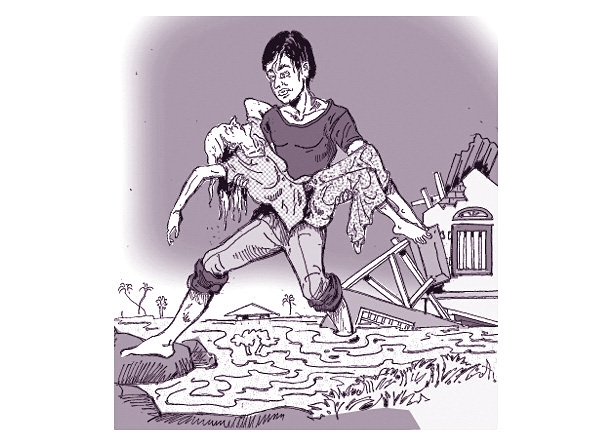
When you hear the word gratitude the first impression you get is a tail-wagging dog. If you feed a dog one day, it will wag its tail even if you meet it after a few years. That is gratitude. In addition, dogs are great teachers. They are at home in the world. They live in the moment and they force us to stay with them. Dogs love us and remain grateful unconditionally not for our bodies or bank accounts.
Small children are taught to say ‘Thank you’ for any favour they receive from others. They do not know that the two words can have positive effects on your health and the well-being of others.
Some time ago I had to call emergency services as I found one of my family members was unconscious. Within minutes an ambulance arrived and the paramedics whisked the patient away to the nearest hospital. He was in intensive care for a few days and returned home. We were marvelled at the impact of a handful of strangers who took charge of the patient at a critical time. I immediately wrote thank you notes to those who saved the patient’s life. I knew that it was a small gesture on my part. However, it was the only way I could express my gratitude to a dedicated team.
Selfless people
Later I realized that there are a large number of selfless people who do life-saving work, but they never expect anything in return. How volunteers saved a large number of flood victims is a case in point. The flood victims may not have expressed their gratitude in so many words. However, they would have felt a deep sense of gratitude to the volunteers who saved them.
Why do people come forward to help those facing natural disasters and other dangerous situations? A recent research in the United States shows that sharing thoughts of gratitude and performing acts of kindness can boost your mood and have other positive effects on your health. Almost all religions teach that gratitude does have a good impact on your happiness. Professor of Psychology Willibald Ruch says that gratitude is among the top five predictors of happiness.
By showing gratitude you can make positive changes in your own life. If you feel a sense of gratitude whenever you receive something that is good for you, it will be a healthy sign. You cannot get such a feeling in a vacuum because others have to play their roles. They can be your loved ones, friends, strangers or even people in authority. Gratitude is how you relate to them when you see yourself in connection with things larger than yourself.
Gratification lifestyle
Strangely, many people do not pause to appreciate what others are doing for them. For this you have to blame your gratification lifestyle. With the popularity of social media the young people feel that they are the centre of the universe. They seem to think there is no necessity to thank those who help them.
Why should we thank others even for minor favours? Recent studies show that those who express gratitude increase their own happiness levels. They also lower their blood pressure levels to a great extent. On the other hand, they will be able to sleep well and improve their relationships. They are also less affected by pain because of the positive impact on their depression.
They may not know that positive effects of gratitude are long lasting. Research shows that those who write thank you notes improve their mental health. There was also a decrease in their bodily pains. What is more, they feel more energetic in completing their daily activities. Unfortunately, schools and universities do not teach the value of gratitude since it is fairly a new field of study. Researchers are still trying to find out its cause and effect relationship. We know that those who perform acts of gratitude can sleep well. However, we do not know the reason for it. Researchers are wondering whether gratitude leads to better sleep or sleep leads to more gratitude. They also probe whether there is another variable that leads to gratitude and improved sleep.
Children
Despite such controversies, we know for certain that gratitude can benefit people at any stage of life. Most elderly people remain grateful for their children and grandchildren who support them. Elderly people cannot regain their physical strength or mental agility. Therefore they focus on gratitude. They are thankful to their children and grandchildren for their present situation.
How do gratitude recipients react? Research shows that those who receive thank you notes or acts of kindness experience positive emotions. You feel happy when someone holds a door open for you. Similarly, you are happy if you receive some unexpected help. Recently I was pleasantly surprised to see that someone has credited a big sum of money to my bank account in appreciation of a small favour I had done.
When you thank someone they are more likely to return the favour or pay kindness forward. Psychologically, people feel very happy when you thank them. However, some people hesitate to say thank you. The give-and-take of gratitude deepens relationships. In a close relationship husbands and wives do not thank each other. However, there are other ways of showing gratitude. A wife can make her husband feel appreciated. Such a feeling of appreciation will go a long way to strengthen their relationship.
Some people are ungrateful by nature. However, they can learn the art of being grateful. Such people will do well to maintain a gratitude journal. It is something similar to Pinpotha maintained by Buddhists in the past. They can record positive events in the journal. At the beginning this may not be easy. With practice, however, you can do it well. I knew of a man who kept a gratitude journal. Although his family members laughed at him, he did not give up the habit. When he was diagnosed with a terminal disease he used to read his gratitude journal very happily.
By R.S. Karunaratne ✍️
Features
Another Christmas, Another Disaster, Another Recovery Mountain to Climb

The 2004 Asian Tsunami erupted the day after Christmas. Like the Boxing Day Test Match in Brisbane, it was a boxing day bolt for Indonesia, Thailand, Sri Lanka, India and Maldives. Twenty one years later, in 2025, multiple Asian cyclones hit almost all the old victims and added a few more, including Malayasia, Vietnam and Cambodia. Indonesia and Sri Lanka were hit hard both times. Unlike the 2004 Tsunami, the 2025 cyclones made landfalls weeks before Christmas, during the Christian Season of Advent, the four-week period before Christmas preparing for the arrival of the Messiah. An ominously adventus manifestation of the nature’s fury.
Yet it was not the “day of wrath and doom impending … heaven and earth in ashes ending” – heavenly punishment for government lying, as an opposition politician ignorantly asserted. By that token, the gods must have opted to punish half a dozen other Asian countries for the NPP government’s lying in Sri Lanka. Or all those governments have been caught lying. Everyone is caught and punished for lying, except the world’s Commander in Chief for lying – Donald J. Trump. But as of late and none too sooner, President Trump is getting his punishment in spades. Who would have thought?
In fairness, even the Catholic Church has banished its old hymn of wrath (Dies irae, dies illa) that used to be sung at funerals from its current Missals; and it has on offer, many other hymns of peace and joy, especially befitting the Christmas season. Although this year’s Christmas comes after weeks of havoc caused by cyclonic storms and torrential rains, the spirit of the season, both in its religious and secular senses, will hopefully provide some solace for those still suffering and some optimism to everyone who is trying to uplift the country from its overflowing waterways and sliding slopes.
As the scale of devastation goes, no natural disaster likely will surpass the human fatalities that the 2004 Tsunami caused. But the spread and scale of this year’s cyclone destruction, especially the destruction of the island’s land-forms and its infrastructure assets, are, in my view, quite unprecedented. The scale of the disaster would finally seem to have sunk into the nation’s political skulls after a few weeks of cacophonic howlers – asking who knew and did what and when. The quest for instant solutions and the insistence that the government should somehow find them immediately are no longer as vehement and voluble as they were when they first emerged.
NBRO and Landslides
But there is understandable frustration and even fear all around, including among government ministers. To wit, the reported frustration of Agriculture Minister K.D. Lalkantha at the alleged inability of the National Building Research Organization (NBRO) to provide more specific directions in landslide warnings instead of issuing blanket ‘Level 3 Red Alerts’ covering whole administrative divisions in the Central Province, especially in the Kandy District. “We can’t relocate all 20 divisional secretariats” in the Kandy District, the Minister told the media a few weeks ago. His frustration is understandable, but expecting NBRO to provide political leaders with precise locations and certainty of landslides or no landslides is a tall ask and the task is fraught with many challenges.
In fairness to NBRO and its Engineers, their competence and their responses to the current calamity have been very impressive. It is not the fault of the NBRO that local disasters could not be prevented, and people could not be warned sufficiently in advance to evacuate and avoid being at the epicentre of landslides. The intensity of landslides this year is really a function of the intensity and persistence of rainfall this season, for the occurrence of landslides in Sri Lanka is very directly co-related to the amount of rainfall. The rainfall during this disaster season has been simply relentless.
Evacuation, the ready remedy, is easier said than socially and politically done. Minister Lal Kantha was exasperated at the prospect of evacuating whole divisional secretariats. This was after multiple landslides and the tragedies and disasters they caused. Imagine anybody seriously listening to NBRO’s pleas or warnings to evacuate before any drop of rainwater has fallen, not to mention a single landslide. Ignoring weather warnings is not peculiar to Sri Lanka, but a universal trait of social inertia.
I just lauded NBRO’s competence and expertise. That is because of the excellent database the NBRO professionals have compiled, delineating landslide zones and demarcating them based on their vulnerability for slope failure. They have also identified the main factors causing landslides, undertaken slope stabilization measures where feasible, and developed preventative and mitigative measures to deal with landslide occurrences.
The NBRO has been around since the 1980s, when its pioneers supplemented the work of Prof. Thurairajah at Peradeniya E’Fac in studying the Hantana hill slopes where the NHDA was undertaking a large housing scheme. As someone who was involved in the Hantana project, I have often thought that the initiation of the NBRO could be deemed one of the positive legacies of then Housing Ministry Secretary R. Paskaralingam.
Be that as it may, the NBRO it has been tracking and analyzing landslides in Sri Lanka for nearly three decades, and would seem to have come of age in landslides expertise with its work following 2016 Aranayake Landslide Disaster in the Kegalle District. Technically, the Aranayake disaster is a remarkable phenomenon and it is known as a “rain-induced rapid long-travelling landslide” (RRLL). In Kegalle the 2016 RRLL carried “a fluidized landslide mass over a distance of 2 km” and caused the death of 125 people. International technical collaboration following the disaster produced significant research work and the start of a five-year research project (from 2020) in partnership with the International Consortium on Landslides (ICL). The main purpose of the project is to improve on the early warning systems that NBRO has been developing and using since 2007.
Sri Lankan landslides are rain induced and occur in hilly and mountainous areas where there is rapid weathering of rock into surface soil deposits. Landslide locations are invariably in the wet zone of the country, in 13 districts, in six provinces (viz., the Central, Sabaragamuwa, Uva, Northwestern, Western and Southern, provinces). The Figure below (from NBRO’s literature) shows the number of landslides and fatalities every year between 2003 and 2021.
Based on the graphics shown, there would have been about 5,000 landslides and slope failures with nearly 1,000 deaths over 19 years between 2003 and 2021. Every year there was some landslide or slope failure activity. One notable feature is that there have been more deaths with fewer landslides and vice-versa in particular years. In 2018, there were no deaths when the highest number (1,250) of landslides and slope failures occurred that year. Although the largest number in an year, the landslides in 2018 could have been minor and occurred in unpopulated areas. The reasons for more deaths in, say, 2016 (150) or 2017 (250+), could be their location, population density and the severity of specific landslides.
NBRO’s landslide early warning system is based on three components: (1) Predicting rainfall intensity and monitoring water pressure build up in landslide areas; (2) Monitoring and observing signs of soil movement and slope instability in vulnerable areas; and (3) Communicating landslide risk level and appropriate warning to civil authorities and the local public. The general warnings to Watch (Yellow), be Alert (Brown), or Evacuate (Red) are respectively based on the anticipated rainfall intensities, viz., 75 mm/day, 100 mm/day; and 150 mm/day or 100 mm/hr. My understanding is that over the years, NBRO has established its local presence in vulnerable areas to better communicate with the local population the risk levels and timely action.
Besides Landslides
This year, the rain has been relentless with short-term intensities often exceeding the once per 100-year rainfall. This is now a fact of life in the era of climate change. Added to this was cyclone Ditwah and its unique meteorology and trajectory – from south to north rather than northeast to southwest. The cyclone started with a disturbance southwest of Sri Lanka in the Arabian Sea, traversed around the southern coast from west to east to southeast in the Bay of Bengal, and then cut a wide swath from south to north through the entire easterly half of the island. The origin and the trajectory of the cyclone are also attributed to climate change and changes in the Arabian Sea. The upshot again is unpredictability.
Besides landslides, the rainfall this season has inundated and impacted practically every watershed in the country, literally sweeping away roads, bridges, tanks, canals, and small dams in their hundreds or several hundreds. The longitudinal sinking of the Colombo-Kandy Road in the Kadugannawa area seems quite unparalleled and this may not be the only location that such a shearing may have occurred. The damages are so extensive and it is beyond Sri Lanka’s capacity, and the single-term capacity of any government, to undertake systematic rebuilding of the damaged and washed-off infrastructure.
The government has its work cutout at least in three areas of immediate restoration and long term prevention. On landslides warning, it would seem NBRO has the technical capacity to do what it needs to do, and what seems to be missing is a system of multi-pronged and continuous engagement between the technical experts, on the one hand, and the political and administrative powers as well as local population and institutions, on the other. Such an arrangement is warranted because the landslide problem is severe, significant and it not going to go away now or ever.
Such an engagement will also provide for the technical awareness of the problem, its mitigation and the prevention of serious fallouts. A restructuring could start from the assignment of ministerial responsibilities, and giving NBRO experts constant presence at the highest level of decision making. The engagement should extend down the pyramid to involve every level of administration, including schools and civil society organizations at the local level.
As for external resources, several Asian countries, with India being the closest, are already engaged in multiple ways. It is up to the government to co-ordinate and deploy these friendly resources for maximum results. Sri Lanka is already teamed with India for meteorological monitoring and forecasting, and with Japan for landslide research and studies. These collaborations will obviously continue but they should be focused to fill gaps in climate predictions, and to enhance local level monitoring and prevention of landslides.
To deal with the restoration of the damaged infrastructure in multiple watershed areas, the government may want to revisit the Accelerated Mahaweli Scheme for an approach to deal with the current crisis. The genesis and implementation of that scheme involved as many flaws as it produced benefits, but what might be relevant here is to approach the different countries who were involved in funding and building the different Mahaweli headworks and downstream projects. Australia, Britain, Canada, China, Italy, Japan, Sweden and Germany are some of the countries that were involved in the old Mahaweli projects. They could be approached for technical and financial assistance to restore the damaged infrastructure pieces in the respective watershed areas where these countries were involved.
by Rajan Philips ✍️
-

 Midweek Review6 days ago
Midweek Review6 days agoHow massive Akuregoda defence complex was built with proceeds from sale of Galle Face land to Shangri-La
-
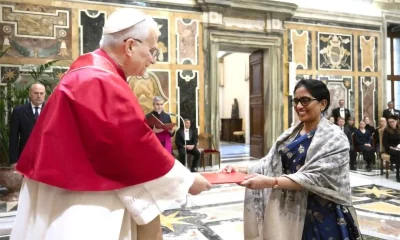
 News5 days ago
News5 days agoPope fires broadside: ‘The Holy See won’t be a silent bystander to the grave disparities, injustices, and fundamental human rights violations’
-

 News5 days ago
News5 days agoPakistan hands over 200 tonnes of humanitarian aid to Lanka
-

 Business4 days ago
Business4 days agoUnlocking Sri Lanka’s hidden wealth: A $2 billion mineral opportunity awaits
-
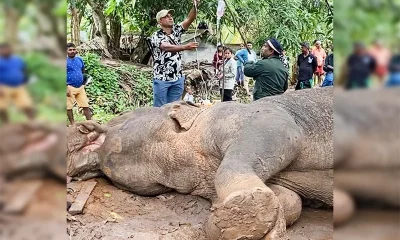
 News6 days ago
News6 days agoBurnt elephant dies after delayed rescue; activists demand arrests
-

 Editorial6 days ago
Editorial6 days agoColombo Port facing strategic neglect
-

 News4 days ago
News4 days agoArmy engineers set up new Nayaru emergency bridge
-

 News6 days ago
News6 days agoSri Lanka, Romania discuss illegal recruitment, etc.













